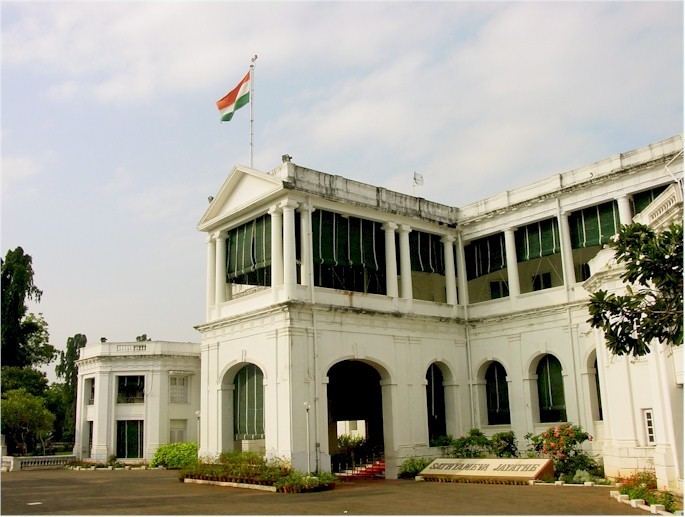 | ||
Raj Bhavan(Tamil: ஆளுநர் மாளிகை (Tamil Nadu), literally the "Governor's Palace," is the official residence of the Governor of Tamil Nadu. It is located in Chennai, the capital city of Tamil Nadu.
Contents
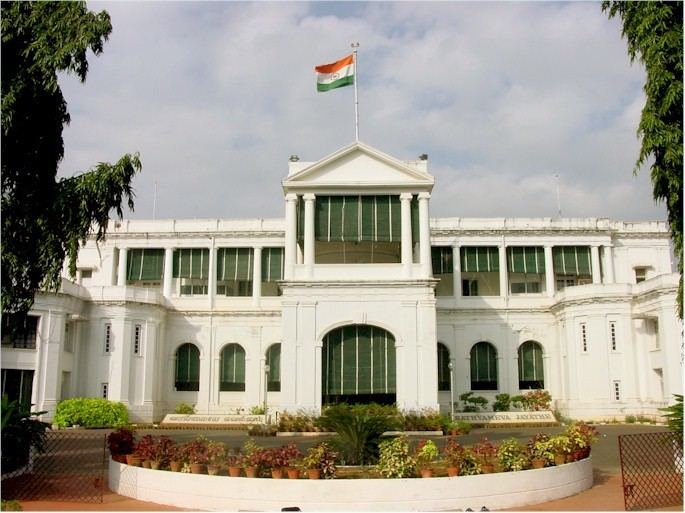
History
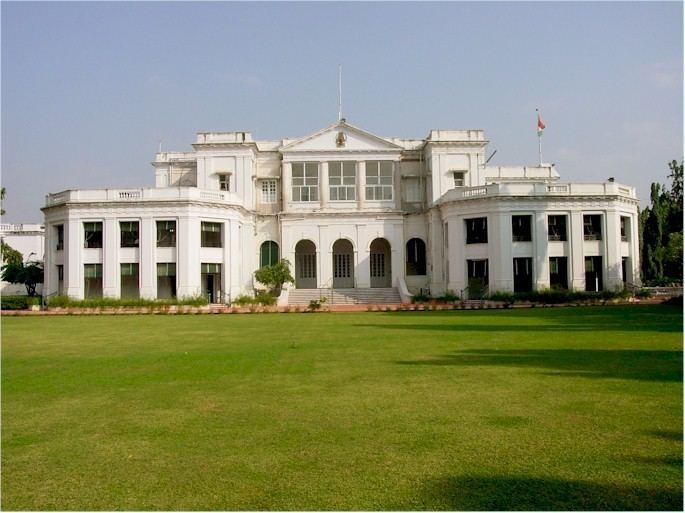
The earliest official residence of the Governors of Madras were in Fort St. George, the first one built in the 1640s on what is now the Parade Square. This was pulled down in 1693 and a new one built eastwards where, in later years, it became the core of the Secretariat. When the Governor’s garden house, was destroyed by the French in 1746, a new garden house was acquired for the Governor after the French withdrawal in 1749. A house, which belonged to Antonia de Madeiros, a member of perhaps the richest family of the time, became the core of Government House around which developed what is now called Government Estate. It was in the 1820 that Governor Thomas Munro (1820–1827) made Government House the official residence and now it called as Raj Bhavan and was once Guindy Lodge, the Governor’s country house.
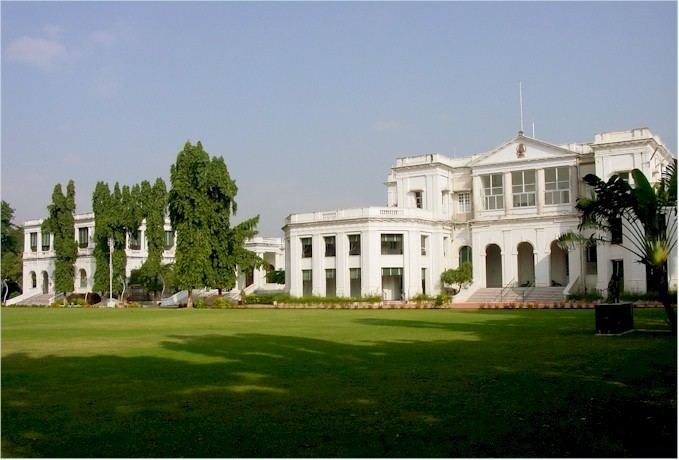
Guindy Lodge, it is believed, was built by Governor William Langhorne (1672–1678) in the early 1670s in garden space carved out of the Guindy Forest that had helped make St. Thomas’ mount a salubrious place for rest and recreation. When Langhorne left in 1678, he sold the property to the then Chief Merchant of Madras, Beri Chinna Venkatadri, the younger brother of one of the founders of the city, Beri Thimappa. When Chinna Venkatadri had problems with the East India Company, he gifted Guindy Lodge to the Company’s Madras Government.
Area of Raj Bhavan
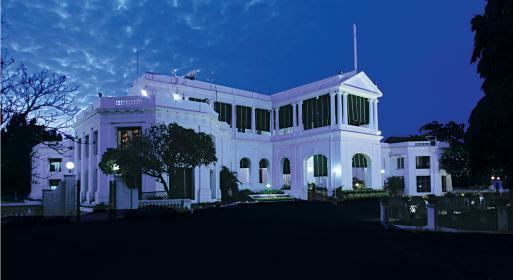
Raj Bhavan is situated in the Guindy Park Reserved Forest Area. The blackbuck, a near-threatened species of antelope, was introduced to Guindy Park by Lord Willingdon in 1924. The present area of the Raj Bhavan Estate is 156.14 acres (0.6319 km2), after large areas of land adjoining Raj Bhavan were made over for other public purposes, as shown below:
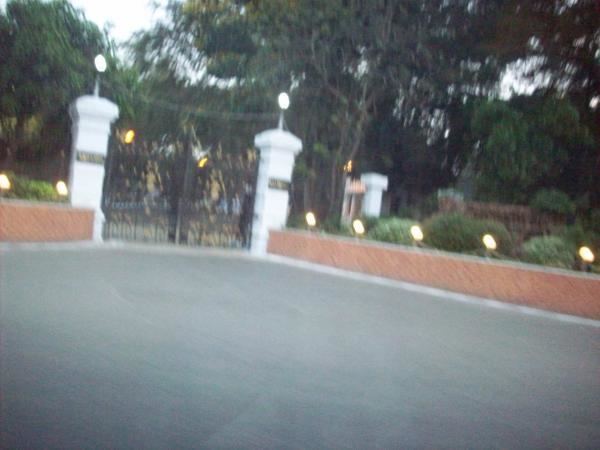

There are also two pieces of land near the Adyar River Bed and in Ikkadu Thangal respectively, totalling 8.63 acres (34,900 m2), belonging to Raj Bhavan. Here is located water pumping stations for supply to Raj Bhavan.
In and around Raj Bhavan, it has deer (spotted deer, black buck and albino), mongoose, jackals, many varieties of reptiles and a large number of birds like partridges, pheasants, parrots, quail, paradise fly-catcher, etc. Bird watchers have noticed migratory birds here. Used as a government ‘country house’ till the area was ravaged by the French and Mysore in the 18th century, Guindy lodge then passed into private hands at the beginning of the 19th century. The first private owner mentioned is Mr. Gilbert Ricketts of Madras, who in 1813, was seeking a loan from the government bank. When Ricketts died intestate in December, 1817, with the property heavily mortgaged to the Bank and one Mr. Griffiths, the estate devolved on the Registrar of the Supreme Court as administrator. Protracted legal proceedings favoured the Bank which, thereafter, in 1821, offered the property to the Government for a sum of 10,000 pagodas (or Rs.35,000). Government also acquired an adjacent property for Rs.8,750 from the merchant Joseph Nazar Shawmier. Between 1821 and 1824, Government linked the two properties with a third purchaser and the Raj Bhavan property as it existed at Independence came into being.
